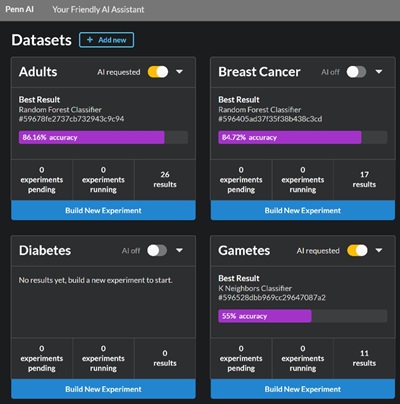biostatistics
See the following -
Clinical Trial Design Management: Best Practices for Small Budget Studies
 ClinCapture hosted the 12th BioTalks in Park City, UT, on the topic of Clinical Trial Design & Management: Best Practices for Small Budget Studies. This was the first event in the series hosted in the biotech hub of Salt Lake City. The panel discussion gathered experts from CROs and sponsor companies to conduct quality clinical trials in a cost effective manner. Industry experts shared their knowledge on running high quality, small budget clinical trials covering clinical operations to clinical data management and biostatistics...
ClinCapture hosted the 12th BioTalks in Park City, UT, on the topic of Clinical Trial Design & Management: Best Practices for Small Budget Studies. This was the first event in the series hosted in the biotech hub of Salt Lake City. The panel discussion gathered experts from CROs and sponsor companies to conduct quality clinical trials in a cost effective manner. Industry experts shared their knowledge on running high quality, small budget clinical trials covering clinical operations to clinical data management and biostatistics...
- Login to post comments
Clinovo Announces New Customer Win For Its ClinCapture Open-Source Electronic Data Capture System
Leading Pharmaceutical Company Starts Phase II Ophthalmology Clinical Trial With Silicon Valley based CRO Clinovo for Electronic Data Capture (EDC), Clinical Data Management (CDM), Biostatistics, and Medical Writing Services Read More »
- Login to post comments
How Clinical Guidelines Can Fail Both Doctors And Patients
Any confusion over the recent news of cholesterol guidelines in the U.S. is perfectly understandable. On the one hand, the guidelines suggest that nearly half the population should use statins to stave off heart attacks and strokes. On the other, use of the drugs is not with potential side effects and, to many, will offer no substantive benefits. [...] Read More »
- Login to post comments
Huge VA Project to Boost Med School Mission
A dozen state-of the-art buildings that will advance [Stanford's] medical school’s clinical, educational and research missions are beginning to rise, but Stanford isn’t leading the effort. With a construction budget of more than $1 billion, the Veterans Affairs Palo Alto Health Care System, or VAPAHCS, has launched an ambitious building project on its flagship campus on Miranda Avenue in P Read More »
- Login to post comments
Machine Learning in Healthcare: Part 2 - Tools Available to the Average Healthcare Worker
 A variety of machine learning tools are now available that can be part of the armamentarium of many industries, to include healthcare. Users can choose from commercial expensive applications such as Microsoft Azure Machine Learning Studio, SAS Artificial Intelligence Solutions or IBM SPSS Modeler. Academic medical centers and universities commonly have licenses for commercial statistical/machine learning packages so this may be their best choice. The purpose of this article is to discuss several free open source programs that should be of interest to anyone trying to learn more about machine learning, without the need to know a programming language or higher math.
A variety of machine learning tools are now available that can be part of the armamentarium of many industries, to include healthcare. Users can choose from commercial expensive applications such as Microsoft Azure Machine Learning Studio, SAS Artificial Intelligence Solutions or IBM SPSS Modeler. Academic medical centers and universities commonly have licenses for commercial statistical/machine learning packages so this may be their best choice. The purpose of this article is to discuss several free open source programs that should be of interest to anyone trying to learn more about machine learning, without the need to know a programming language or higher math.
- Login to post comments
Machine Learning in Healthcare: Part 3 - Time for a Hands-On Test
 Every inpatient and outpatient EHR could theoretically be integrated with a machine learning platform to generate predictions, in order to alert clinicians about important events such as sepsis, pulmonary emboli, etc. This approach may become essential when genetic information is also included in the EHR which would mandate more advanced computation. However, using machine learning and artificial intelligence (AI) in every EHR will be a significant undertaking because not only do subject matter experts and data scientists need to create and validate the models, they must be re-tested over time and tested in a variety of patient populations. Models could change over time and might not work well in every healthcare system. Moreover, the predictive performance must be clinically, and not just statistically significant, otherwise, they will be another source of “alert fatigue.”
Every inpatient and outpatient EHR could theoretically be integrated with a machine learning platform to generate predictions, in order to alert clinicians about important events such as sepsis, pulmonary emboli, etc. This approach may become essential when genetic information is also included in the EHR which would mandate more advanced computation. However, using machine learning and artificial intelligence (AI) in every EHR will be a significant undertaking because not only do subject matter experts and data scientists need to create and validate the models, they must be re-tested over time and tested in a variety of patient populations. Models could change over time and might not work well in every healthcare system. Moreover, the predictive performance must be clinically, and not just statistically significant, otherwise, they will be another source of “alert fatigue.”
- Login to post comments
Penn Medicine Releases Open Source, 'Self-Service' Artificial Intelligence Tool for Data Analytics
 The Penn Medicine Institute for Biomedical Informatics has launched a free, open-source automated machine learning system for data analysis that is designed for anyone to use, from a high school student looking to gain insight on their baseball team's statistics, to trained researchers looking for associations between cancer and environmental factors. "Penn AI," the first widely available tool of its kind, seeks to lower the barrier for entry into artificial intelligence, allowing users to bring in their own datasets or use the several hundred that are available for download within the tool. With a user-friendly dashboard easily run on a laptop, Penn AI is also designed to learn as it goes, ultimately making analysis suggestions based on the "experience" it gains through use.
The Penn Medicine Institute for Biomedical Informatics has launched a free, open-source automated machine learning system for data analysis that is designed for anyone to use, from a high school student looking to gain insight on their baseball team's statistics, to trained researchers looking for associations between cancer and environmental factors. "Penn AI," the first widely available tool of its kind, seeks to lower the barrier for entry into artificial intelligence, allowing users to bring in their own datasets or use the several hundred that are available for download within the tool. With a user-friendly dashboard easily run on a laptop, Penn AI is also designed to learn as it goes, ultimately making analysis suggestions based on the "experience" it gains through use.
- Login to post comments
The Story of How our Health Informatics Textbook Came into Being
 I have been asked many times how and why I became interested in Health Informatics and how that led to the writing and self-publication of our textbook, Health Informatics: Practical Guide. The textbook is now in its 7th edition and has been adopted by a large number of universities for their health informatics courses. More co-authors have come on board, and we are now looking at publishing other textbooks. Thus we thought this would be a good point to tell the story.
I have been asked many times how and why I became interested in Health Informatics and how that led to the writing and self-publication of our textbook, Health Informatics: Practical Guide. The textbook is now in its 7th edition and has been adopted by a large number of universities for their health informatics courses. More co-authors have come on board, and we are now looking at publishing other textbooks. Thus we thought this would be a good point to tell the story.
- Login to post comments